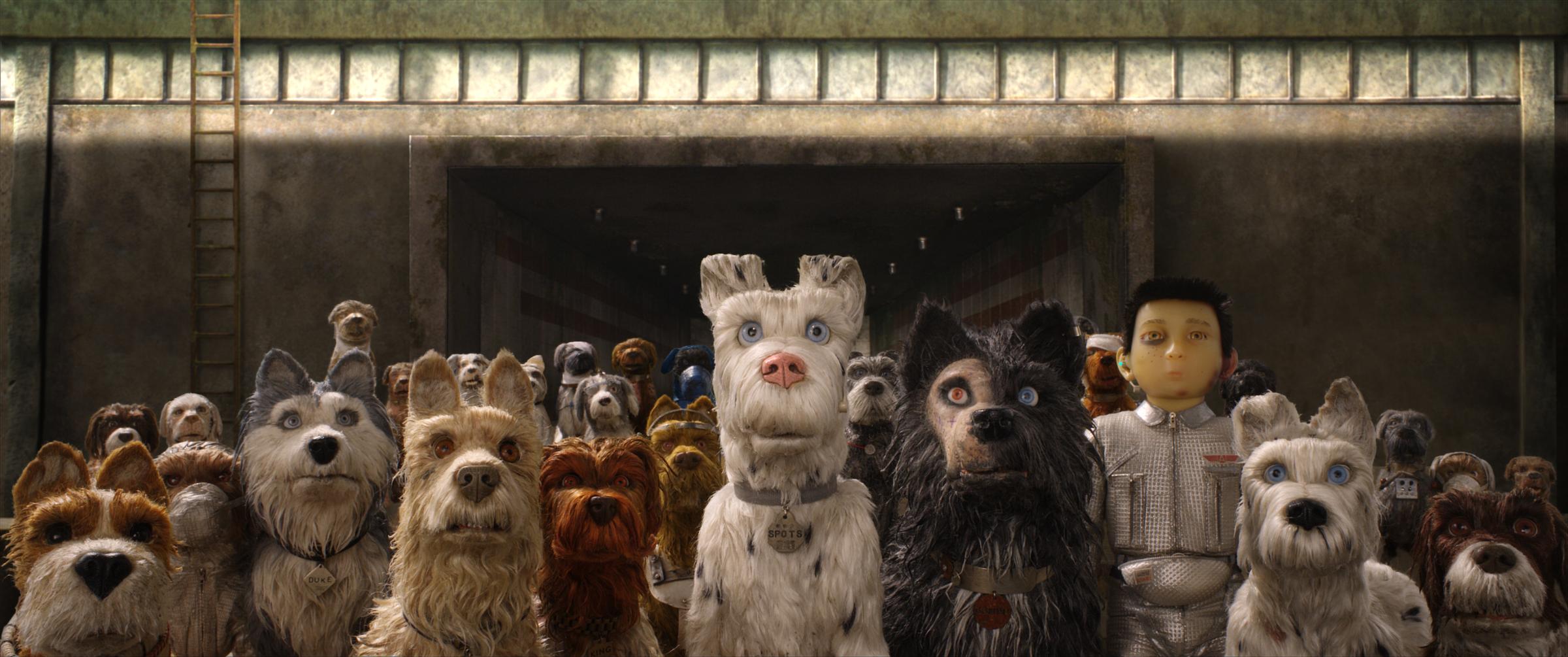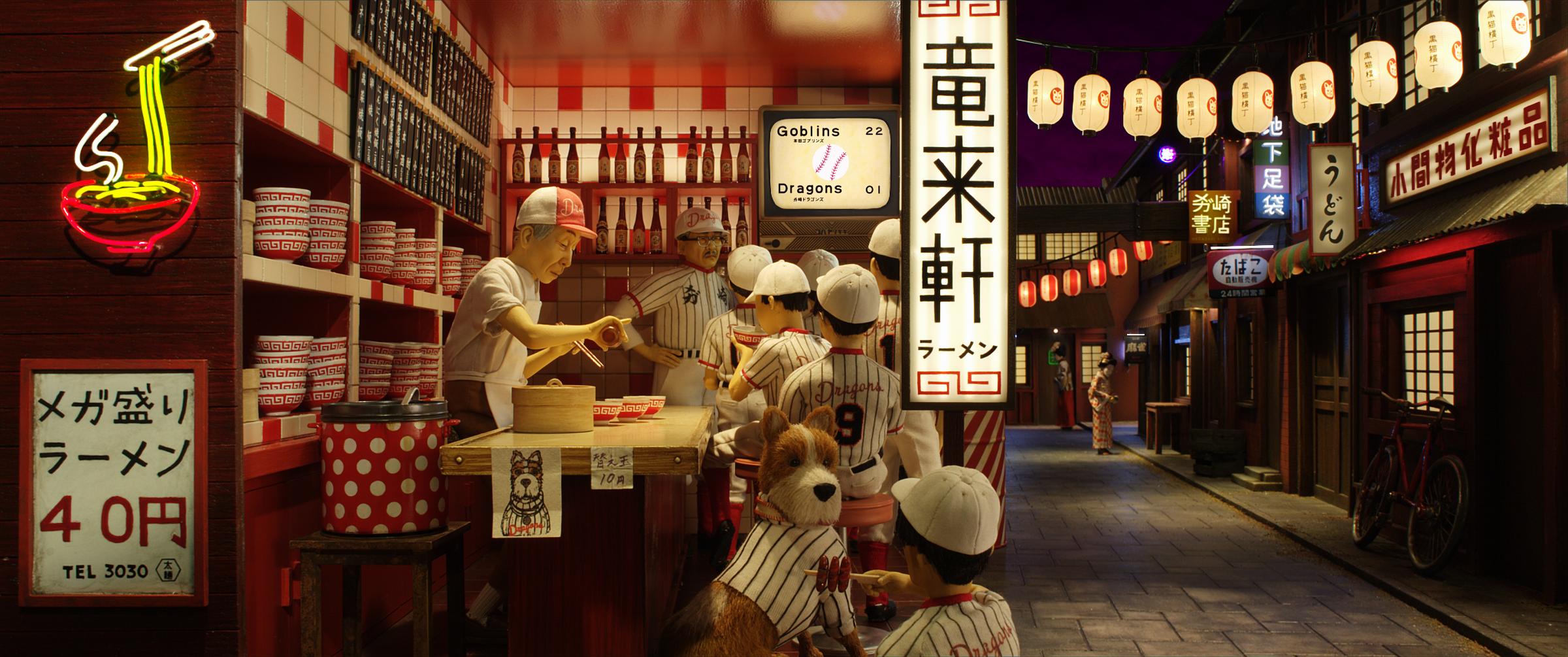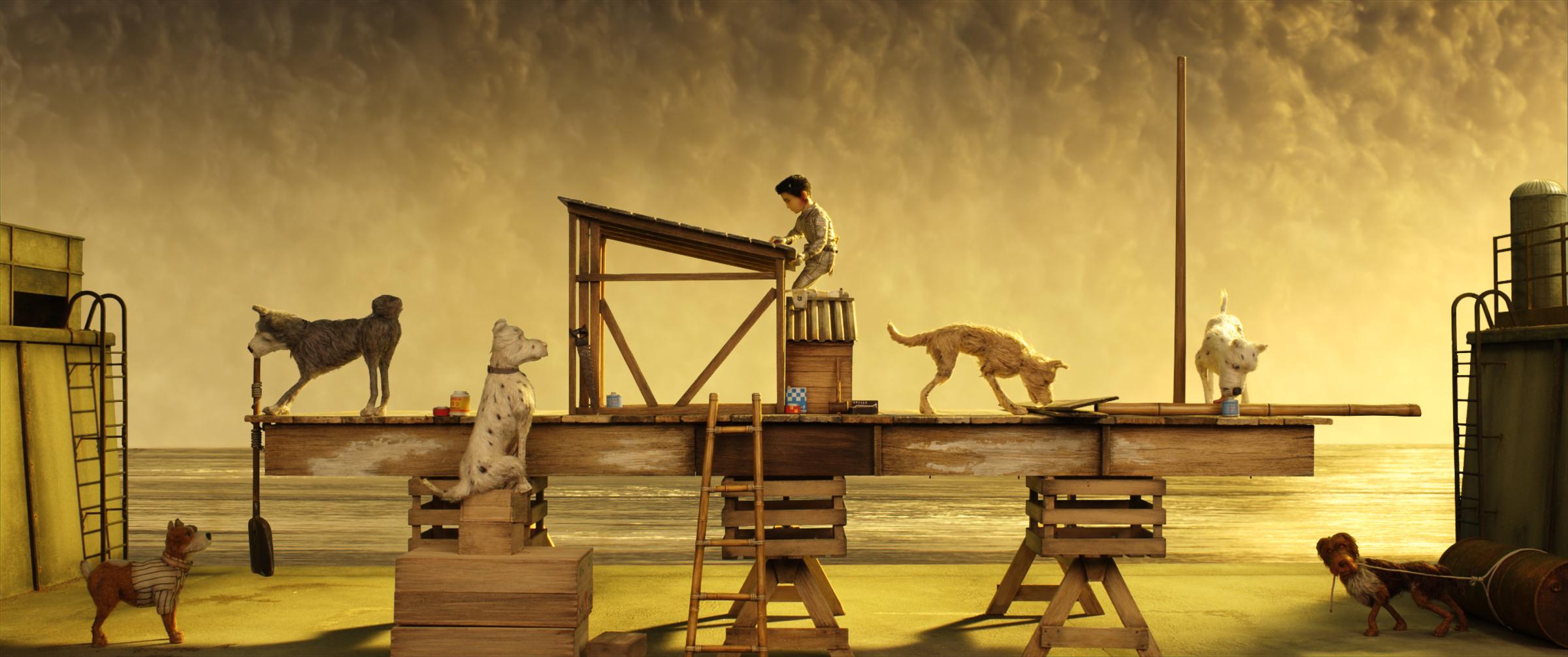Set in the fictional, futuristic Japanese city of Megasaki, Wes Anderson’s new movie Isle of Dogs tells the story of Atari, a 12-year-old boy on a quest to find his dog Spots after the canine is exiled to an apocalyptic looking Trash Island by Atari’s corrupt, cat-favoring uncle, Mayor Kobayashi. It features the voices of several of Anderson’s regulars, including Bill Murray, Edward Norton and Jeff Goldblum.
The movie, which opened in March and expands nationwide April 13, has received largely positive reviews, with many critics praising its captivating aesthetics. Others, meanwhile, have accused it of cultural appropriation, saying its depiction of Japan and Japanese people crosses over from homage into racial stereotyping and marginalization. It is writer and director Anderson’s ninth feature film, and his second made using stop-motion animation following 2009’s Oscar-nominated Fantastic Mr Fox.
The painstakingly slow stop-motion technique, popularized by Aardman, the British design studio behind Wallace and Gromit and Early Man, requires the physical creation of every set, prop and character, and the shooting of their micro-movements frame-by-frame — a hugely ambitious undertaking for a feature-length film.
Above, TIME is debuting a featurette on the behind-the-scenes process of bringing all the moving parts, quite literally, together. Below, TIME spoke with the movie’s lead graphic designer Erica Dorn and producer Jeremy Dawson about how Isle of Dogs was made, specific visual influences and the discussion around cultural appropriation.

TIME: How long did the whole process take, from creating the characters and scenes to shooting the movie?
Jeremy Dawson: The stage of building sets and puppets and shooting them lasted from around September 2015 until November 2017. It was almost two and a half years of making and filming stuff. At the time, we had a crew of several hundred people, with roughly 60 people solely focusing on making puppets.
Erica Dorn: I worked on the movie for 26 months in total, which is the longest I’ve ever worked on a single project.
Dawson: That’s probably the same for me.
Why did Isle of Dogs take such a long time to make?
Dorn: Everything is miniature, so you can’t pop to the prop store — you have to make everything yourself. But even if it we were working on life-size sets, Wes is the kind of director that wants everything to be created and custom-made for that specific, visual world that he’s creating.
Dawson: It’s not like you can purchase a lamp or a vase or a fork; everything has to be designed. In a regular movie, if you need some table settings you can bring them in, but with this movie we need to design everything from scratch. That means thought has gone into everything — even the decorative pattern on a plate.

How much experience did you have of Japan and Japanese culture before working on the movie?
Dorn: I grew up in Japan — I was actually in Japan when Jeremy [Dawson] sent me the initial email asking me to be involved in the project. So visually I have an understanding of the country. Although Megasaki City is a fictional place, all the details come from real Japanese references. It’s like a nostalgic version of Japan, even though it’s set in the future. It’s Japan on planet Anderson.
Dawson: We didn’t make Japan in this movie, we made a Wes Anderson movie that is inspired by his love of Japanese cinema. It’s this fictional, fully immersive, 360-degree world with a basis in reality, like Eastern Europe in The Grand Budapest Hotel, New York in the The Royal Tenenbaums or even a summer camp in Moonrise Kingdom.
Where did the inspiration come from for the ‘look’ of Megasaki city and the movie in general?
Dawson: It’s mainly influenced by the world of Japanese cinema that Wes and the other writers [Kunichi Nomura, Roman Coppola and Jason Schwartzman] are into — they’re all huge movie buffs. The idea was for the movie to be a sort of portal into this Japanese cinema world, inspired by the work of Japanese filmmakers like Akira Kurosawa.
We did a bunch of investigation early on into Ukiyo-e style woodblock prints [used in 18th century Japan to disseminate texts]. The Metropolitan Museum in New York has a huge collection of them and the curator there kindly arranged for us to go in person and look through it. There were 15 or 20 different versions of some of the prints, which was a big inspiration for the look of the skies in the movie.

What was the process the designers went through when creating the props?
Dorn: For each prop, we looked at real Japanese objects in photos, cinema and the real world. Wes would then cherry pick the references or the elements from the references that he liked — for example, he might like a lettering from one reference and a stamp detail from another. That would then become a visual brief for us to start working on the original props for the film.
We’d then go through several iterations of each prop until Wes settled on something. However, that didn’t mean the process was finished. Wes sometimes said “yes” to something, but then when he saw it on camera he felt like it needed to change. It was a constant process of tweaking and revising.
Was there one set that was a particular challenge to create?
Dorn: Yes, the bedroom of Tracey [Greta Gerwig’s character]. It had four walls covered in graphics on different types of paper, as well as newspaper clippings, photos, official documents, receipts and a general collection of evidence that she had collected to write her article against the Mayor of Megasaki.
We spent a long time on that set as every little thing had to be designed. We wrote all the newspaper articles and all the official documents, and we had to make and age them all several times because we kept moving them around and touching them. That was the most visually-complex and also labor-intensive set in the whole movie. And the irony is, you only see each wall for about two seconds.
Dawson: If you freeze-frame on those walls and zoom in on the little newspaper clippings taped to them, those articles contain real text that is actually relevant to the movie.

What do you make of accusations of cultural appropriation the movie has received?
Dorn: I think cultural appropriation isn’t really a concept in Japan. Japan is becoming an inspiration for artists, filmmakers and fashion outside the country, and Japanese culture generally is all about assimilating and mixing with other cultures. Wes chose Japan [as a setting for this movie] and I think people in Japan will be really excited to see that. People are ready to criticize on behalf of Japanese people.
After working so hard on a project for such a long time, what does it feel like to finally sit down and watch it?
Dorn: I think when you understand the number of hours and amount of manpower that went into it, it’s even more rewarding.
Dawson: We were so embedded in the movie for so long — we were all down the hall from each other, sharing lunches. We were like a family. We’re all super proud of it.
More Must-Reads From TIME
- The 100 Most Influential People of 2024
- The Revolution of Yulia Navalnaya
- 6 Compliments That Land Every Time
- What's the Deal With the Bitcoin Halving?
- If You're Dating Right Now , You're Brave: Column
- The AI That Could Heal a Divided Internet
- Fallout Is a Brilliant Model for the Future of Video Game Adaptations
- Want Weekly Recs on What to Watch, Read, and More? Sign Up for Worth Your Time
Write to Kate Samuelson at kate.samuelson@time.com